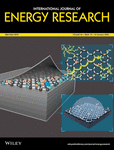Preliminary lightweight core design analysis of a micro-transportable gas-cooled thermal reactor
Funding information: National Key R&D Program of China, Grant/Award Number: 2020YFB1901900
Summary
Micro nuclear reactors with small sizes have a wide range of applications. The present study discusses the lightweight core design for a micro-transportable gas-cooled thermal reactor. The main objective of this design is to reach an output power of 20 MWt for a lifetime of several years without refueling. To this end, a moderator is introduced in the assembly design to help decrease the volume fraction of the fuel inventory, and a reflector slider is used to control reactivity. A two-dimensional assembly model is established using the Monte Carlo code OpenMC to gain insights into the influences of design parameters on the core mass and neutronic performances. In this regard, various parameters, including the assembly configuration, pitch-to-diameter ratio, and moderator material, are analyzed. It is found that using the BeO moderator can achieve a low critical mass of approximately 5 metric tons. To fulfill the target thermal power, 37 fuel assemblies are arrayed in four rings, and pure beryllium is selected as the most appropriate reflector material. Meanwhile, the utilization of a low-density reflector yields a more compact design with a core weight of 8.06 metric tons. Finally, core performance features, including depletion, power profiles, flux distributions, and reactivity feedback coefficients, are analyzed. The obtained results reveal that the proposed design can sustain full power generation for over 10 years without refueling. Moreover, an adequate shutdown margin is ensured using reflector sliders to control the reactivity, and negative reactivity coefficients guarantee the inherent safety of the core.




